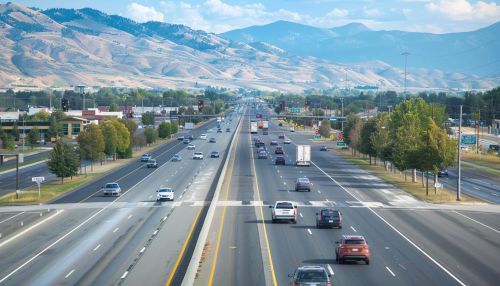Nampa
History
The history of Nampa dates back to the late 19th century when the Oregon Short Line Railroad established a connection between Granger, Wyoming, and Huntington, Oregon. This railroad connection brought a significant influx of settlers to the area, leading to the establishment of Nampa in 1886. The city was named after the Shoshone word for moccasin, reflecting the Native American heritage of the region.


Geography and Climate
Nampa is located in the southwestern part of Idaho, in the Boise Metropolitan Area. The city is situated in a high desert environment, with the Snake River flowing nearby. The climate of Nampa is characterized by hot, dry summers and cold, snowy winters, a pattern typical of a semi-arid continental climate.
Economy
The economy of Nampa is diverse, with sectors such as manufacturing, health care, retail, and education playing significant roles. Some of the largest employers in the city include the Nampa School District, St. Luke's Health System, and Walmart. Nampa is also home to several manufacturing companies, including Amalgamated Sugar Company and Woodgrain Millwork, which contribute significantly to the local economy.
Demographics
As of the 2010 census, Nampa had a population of 81,557, making it the second-largest city in Idaho. The city has a diverse demographic makeup, with a significant Hispanic population. The age distribution in Nampa is fairly balanced, with a median age of 30.2 years.
Education
Nampa is served by the Nampa School District, which operates several elementary, middle, and high schools. The city is also home to Northwest Nazarene University, a private Christian university offering a range of undergraduate and graduate programs.
Culture and Recreation
Nampa boasts a vibrant cultural scene, with numerous festivals, art galleries, and music events throughout the year. The Nampa Civic Center is a major venue for concerts, theater performances, and other cultural events. The city is also home to the Warhawk Air Museum, which showcases a collection of vintage aircraft and military memorabilia.
For outdoor enthusiasts, Nampa offers a variety of recreational opportunities. The city has numerous parks, including the 140-acre Lakeview Park, which features a rose garden, swimming pool, and several sports facilities. The Deer Flat National Wildlife Refuge, located on the shores of Lake Lowell, offers opportunities for birdwatching, hiking, and boating.
Infrastructure
Nampa's infrastructure includes a comprehensive road network, with Interstate 84 serving as the main transportation artery. The city is also served by the Nampa Municipal Airport and is within close proximity to the Boise Airport. In terms of public services, the city provides water, sewer, and trash collection services, while electricity is provided by Idaho Power.


Government
Nampa operates under a mayor-council form of government, with a mayor and six council members elected by the residents. The city is also part of the Canyon County, and is represented in the Idaho Legislature and the United States Congress.
